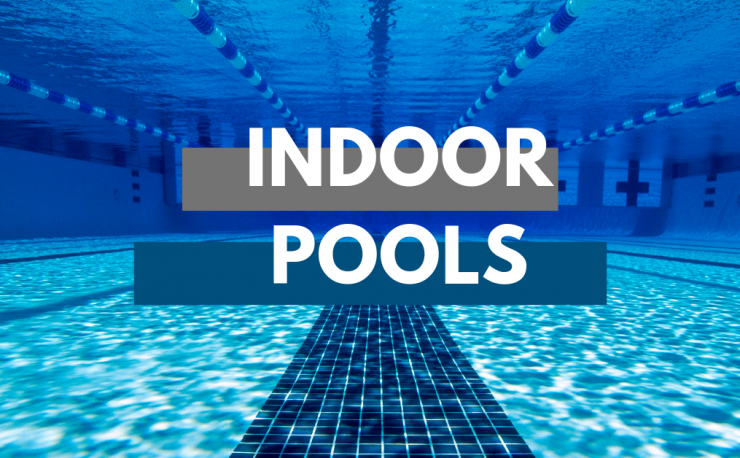
A few months ago one of our readers asked us a really interesting question. His problem was about the choice of the material with which to make a balustrade and the hatch tops that to be installed in an indoor pool. But let’s see together specifically the question and the answer of our expert Alessandro.
The question: what material to use for a balustrade and hatch tops in an indoor pool?
As just mentioned, our user needs to make a balustrade and some hatch tops to be fitted in an indoor pool. One of the factors to consider is the height of the building where the swimming pool is. The building is not high enough to ensure a proper disposal of chlorine that is discharged into the air, (in the gaseous state).
Taking into account also that the temperature of the environment is about 28°C, while that of the water is about 25°C. The user was thinking of orienting himself on stainless steel. Wanting to use a material that lasts over time and that maintains its aesthetic and mechanical characteristics intact, he asked us exactly which type of stainless steel was most suitable.
Answer of expert.
Unfortunately, chlorine and chlorides are a potential threat to stainless steel. This premise, makes the problem of furniture for swimming pools a topic to be treated with extreme care. In fact, their concentration and the temperatures of use are the factors that determine the possible corrosion in the presence of these organic compounds. It is therefore necessary to carefully consider the environmental conditions under which stainless steel will be installed.
Herebelow you can find a few cases. Indeed, depending on different types of waters it will be necessary the use of different type of stainless steel.
Here some examples:
– you can use stainless steel AISI 304, in the case of water network with chloride level up to 200ppm
– in the case of water network with chloride level between 200ppm and 350ppm, is better to use stainless steel AISI 316
– in the case of freshwater or groundwater, where the chloride levels can reach 1000ppm, is better to use super Austenitic steel, duplex or superduplex.
Besides, if to these chloride levels are associated high temperatures (for example in case of thermal water) the levels can be reduced (for example the level for AISI 304 can be reduced from 200ppm to 50ppm).
The indoor pools are the most fearsome for stainless steel due to the presence of chlorine in combination with oxygen.
In short, it’s better to make a environmental analysis before choosing materials when you have to work with chlorine.
Just to given a idea, let’s try to imagine a “scale” safety-cost based on the results of a possible environmental analysis.
Let us take a practical example: a “scale” safety-cost.
In an environment with an indoor pool with chloride levels higher than 300ppm (like the one described by our reader) the following solution may be sufficient.
For balustrades, ladders, trampolines and other furnishings placed on the ground (especially if they have welded joints) it is advisable to orient yourself on the stainless steel 1.4751 (AISI 316Ti). Titanium, present in the alloy, prevents the precipitation of the carbs at the edges of the grains, thus protecting the metal from intercrystalline or intergranular corrosion. For the ceiling fastening of hanging accessories, however, are to be taken into account: steel 1.4359 (AISI 904L) or duplex steel 1.4462 (AISI 2205). Then, just to be safe, the PREN value (Pitting Resistance Equivalent Number) that provides a maximum indication of the ability to withstand the pitting (or more generally, localized corrosion) of these steels, goes from 30.85 to 39.90. In this case, we already have an above-average quality level of common installations, so as to lower maintenance costs.
If environmental analyses should detect chloride levels higher than 350ppm and higher temperatures, it’s preferable to use:
- Stainless steel 1.4359 (AISI 904L) or Duplex steel 1.4462 (AISI 2205): for balustrades, ladders, trampolines, etc..
- Duplex steel 1.4410 (AISI2507) or 1.4547 (ASTM S31254): for everything else.
Both of these steels, in fact, have a PREN of more than 40, which characterizes them as super-duplex and super-austenitic. These types of stainless steel ensure an excellent level of corrosion resistance.
Finally, it is always good to remember that the durability of stainless steel (regardless of the quality of the materials) is strongly linked to processing for its assembly, installation and proper maintenance.
The proper maintenance consists in visual check on the joints most at risk (as welds, threads, etc..), a regular freshwater cleaning of the plant (with the subsequent ventilation of the environment) and the application of specific products that help the re-creation of passivation layer (in case of its removal).
Visit our website and discover how easy it is for businesses to buy online our stainless steel products. Fasteners, marine hardware, fittings and fixing systems for photovoltaic installations.
Do you want to read more articles? Click here.